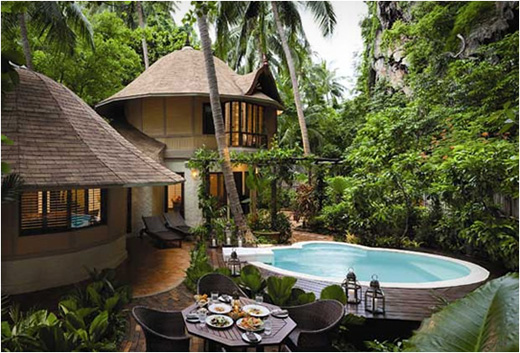|

Getting around Thailand
Air:
Thai Airways International (TG) (www.thaiairways.com) runs services to
all major towns, a total of 12 domestic destinations including Phuket
and Chiang Mai. Bangkok Airways (PG) (www.bangkokair.com) flies
several additional routes including Ko Samui. Discounts are available
during off-peak seasons and during special promotional periods. Orient
Thai Airlines, formerly known as One-Two-Go Airlines (www.flyorientthai.com)
and Nok Air (www.nokair.co.th) also offer domestic flights.
Air passes:
Thai Airways run a ‘Discover Thailand’ air pass each year, which
entitles you to fly to three cities for a set fee. Additional flights,
up to a maximum of 8, can be added at extra cost. See
www.thaiairways.com for more information.
Departure tax:
Departure tax is included in the price of the air ticket.
Road:
Roads in Thailand range from multi-lane freeways around Bangkok to
tiny lanes known as sois. Popular routes in the provinces are often
four lanes.
Side of road: Left
Road quality:
There is a reasonable road network comprising many highways, which are
designated by numbers, and 52,000km (32,300 miles) of national and
provincial roads. All major roads are paved.
Car hire:
Available in all main towns and cities from both international and
local companies.
Taxi:
Taxis are easy to find and cheap to use in Bangkok. In other cities,
such as Chiang Mai, local transport such as tuk tuks are much cheaper
and more common.
Bike:
Bike hire is available at most tourist locations throughout the
country but, due to the erratic nature of driving standards and the
heavy traffic, caution must be observed. It is however an excellent
form of transport for those wishing to travel the quieter areas of the
country.
Coach:
There are many intercity bus services, which range from uncomfortable
and crowded buses to luxury, air conditioned coaches. Prices are quite
cheap but the appalling traffic in some areas of Thailand makes
travelling by bus quite slow.
Regulations:
The minimum age for driving in Thailand is 18 years and the wearing of
seat belts is compulsory. The speed limit is 50kph (31mph) to 60kph
(35mph) in towns and cities and 90 to 120kph (52 to 74mph) on
expressways and country roads.
Documentation:
A national licence and International Driving Permit (IDP) are
required. IDPs are valid for three months, after which a Thai driving
licence is required.

Getting around towns and cities:
Conventional bus services in Bangkok are operated by the Bangkok Mass
Transit Authority, but there are also extensive private minibus
operations. Premium fares are charged for air-conditioned (cream and
blue buses) and express buses. The ordinary buses are cream and red or
white and blue and charge a flat rate regardless of distance travelled.
Fares are generally low and are collected by conductors.
In Bangkok, taxis displaying the TAXI-METER sign are metered. Samlors
or tuk-tuks are three-wheeled taxis without a meter; the fare must be
negotiated before the journey commences. These are cheaper than taxis
but are only suitable for short distances.
There are express, rapid and ordinary motorboat services operated by
the Chao Phraya Express Boat on the Chao Phraya River between
Nonthaburi pier to the north of Bangkok to Rajburana pier in southern
Bangkok. The express boats, marked with yellow, blue or green and
yellow flags, are more expensive than the rapid orange-flag-flying
boats. The ordinary flagless boats are the cheapest.
The Skytrain (BTS), an elevated mass transit system in Bangkok, runs
from 0600-2400. The Metro runs from Hualamphong to Bang Sue. Trains
leave every five to nine minutes between 0600 and 2400.
Chiang Mai public transport is limited to red songtaew (minibuses),
tuk-tuks, rickshaws and distinctive yellow metered taxis mainly
operating from the airport. There is now a limited bus service in
operation.
Rail:
The excellent railway network extends over 4,600km (2,860 miles),
linking all major towns with the exception of Phuket. It is run by
State Railways of Thailand (tel: 1690; www.railway.co.th; online
booking: www.thairailticket.com). There are four main routes to the
northern, eastern, southern and northeastern regions, and also a
western line serving Thon Buri, River Kwai Bridge and Nam Tok.
There are several daily services on each route, with air-conditioned
sleeping and restaurant cars on the principal trains. The journeys are
leisurely and comfortable, and travelling by train is certainly one of
the best ways to get around the country. The Southern Line Express
stops at Surat Thani for those who wish to continue by bus and ferry
to the islands off the east coast. Most railway timetables are
published in English.
Rail passes:
Thailand Rail Pass: available for 20 days travel on all Ordinary,
Rapid, and Express Trains either in Third-class (Air-Conditioned or
Fan); Second-Class (Air-Conditioned or Fan); or Second-Class Sleeper
Services (Air-Conditioned or Fan). Children aged 4-12 pay half the
price of an Adult Pass if they are less than 150 cm tall. Thailand
Rail Passes are only available for purchase in Thailand. You can buy
Thai Rail Passes at Bangkok's Hualamphong Rail Station or affiliated
travel agencies.
By water:
Thailand has, depending on the season, up to 1,600km (1,000 miles) of
navigable inland waterway. Services operate along the Chao Phraya
River in Bangkok between Rajburana and Pakkred by taxi-boat ferries
operated by the Chao Phraya Express Boat (tel: (02) 623 6001/3;
www.chaophrayaexpressboat.com
In addition,
long-tailed motorboats ply the river.
Ferry services operate between the mainland and several islands
including Surat Thani to Ko Samui, Phuket to Phi Phi, Pattaya to Ko
Samet and Trat to Ko Chang, and can be booked in person at the dock.
Strong competition on all of the major routes ensures that fares are
kept low. Reduced services operate during the monsoon season from May
through to October along the east coast and Andaman coast, and from
November until January on the Gulf coast. The more remote spots become
inaccessible in these periods.
Explore Thailand
 Why
Visit Thailand? Why
Visit Thailand?
 Thailand
Travel Guide Thailand
Travel Guide
 Traveling
to Thailand Traveling
to Thailand
 Thailand
things to see and do Thailand
things to see and do
 Thailand
Shopping and nightlife Thailand
Shopping and nightlife
 Thailand
Food and Drink Thailand
Food and Drink
 Getting
around Thailand Getting
around Thailand
 Bangkok
Travel Guide Bangkok
Travel Guide
 Chiang
Mai Travel Guide Chiang
Mai Travel Guide
 Ko
Lipe Travel Guide Ko
Lipe Travel Guide
 Koh
Phi Phi Travel Guide Koh
Phi Phi Travel Guide
 Ko
Phangan Travel Guide Ko
Phangan Travel Guide
 Phuket
Travel Guide Phuket
Travel Guide
 Thailand
History, Language and Culture Thailand
History, Language and Culture
 Thailand
Weather, climate and geography Thailand
Weather, climate and geography
 Thailand
Travel Tips Thailand
Travel Tips
 Thailand
Visa and Passport Requirements Thailand
Visa and Passport Requirements
 Thailand Satellite View & Map Thailand Satellite View & Map
 Thailand Visa Information Thailand Visa Information
 3 Destinations in 1 Ticket 3 Destinations in 1 Ticket
|